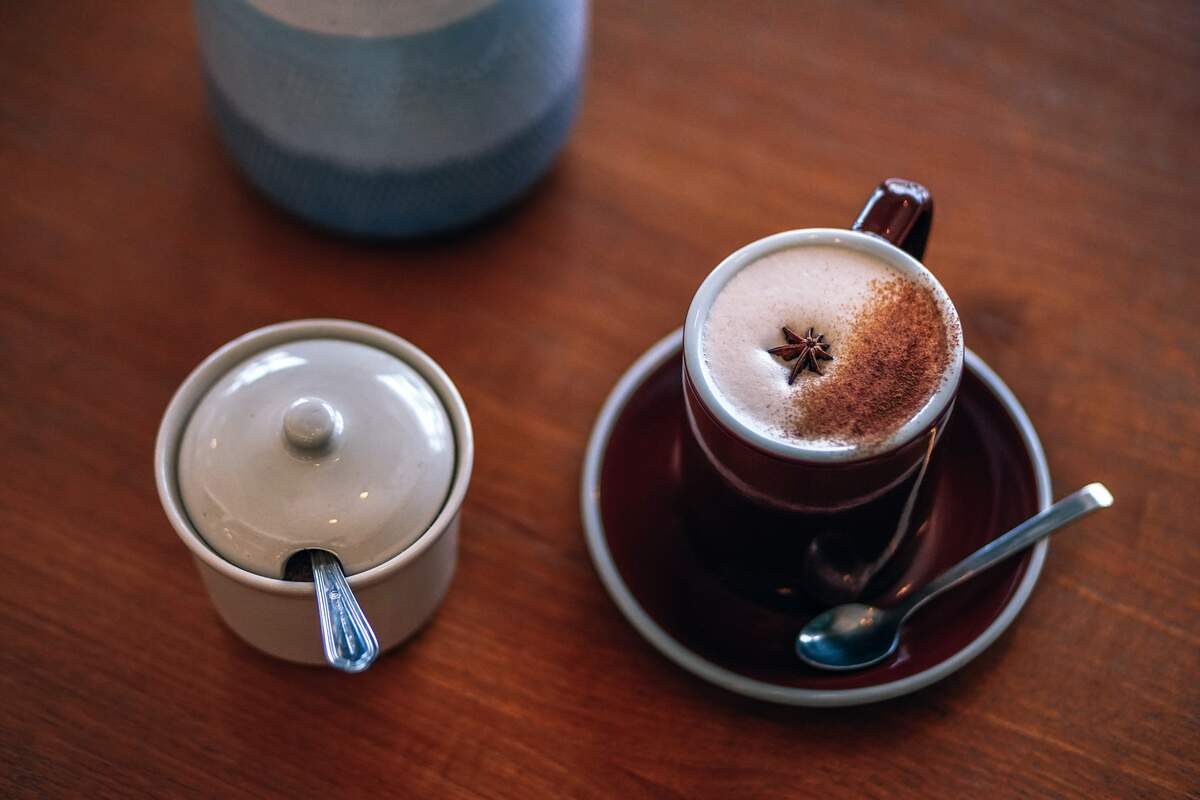

National Chai Day
Observed
annually on September 21st (since 2018)
Dates
September 21st, 2023
September 21st, 2024
September 21st, 2025
September 21st, 2026
September 21st, 2027
Founded by
SomruS on September 14th, 2018
Tags
Food & Drink
Hashtags
Sources
National Chai Day is a day "to celebrate the flavorful drink spreading its leaves across the country by the cupful." It was founded in 2018 by Somrus, a cream liqueur company, whose chief product is Somrus Chai, "an artisanal blend with Eastern spices & nuts, real Wisconsin dairy cream and Caribbean rum."
In Asian countries, particularly in India, where chai originated, the drink is simply known as chai (or Masala chai, meaning "mixed-spice tea" in Hindi), not chai tea—the name often ascribed to it in the West—which is redundant, since "chai" means tea. Chai predates the Common Era by thousands of years. It started out as an Ayurvedic herbal tea on the Indian subcontinent. Used for holistic healing, it was replete with spices such as cardamom, cinnamon, ginger, and black pepper.
During the British colonization of India, the British East India Company established tea plantations in Assam, a state in the northeastern part of the country. Tea consumption grew in India, and by the mid-twentieth century, indigenous people combined their Ayurvedic spice-centric chai with black tea, milk, and sugar. (Black tea with milk and sugar was how the British prepared their tea.) Masala chai as it is known today came to be. By the time of independence, most adults in India started their day with chai, and today it is considered to be India's national tea.
Four components make up chai: tea, milk, spices, and sweetener. The tea is almost always black, and Assam tea is the most popular type. Some people mix it with other teas, like Darjeeling. The milk is usually whole milk. It not only brings out the rich flavor of the spices but aligns with Ayurvedic practices: whole dairy milk is considered a prime source of the saturated fat that is necessary to keep the body functioning. But, dairy milk is sometimes substituted with oat, coconut, almond, soy, or hemp milk.
A number of blends of spices may be used to make chai. Cardamom is the most common spice, with other traditional ones being ginger, cloves, cinnamon, star anise, and peppercorns. Coriander, nutmeg, and fennel are sometimes used too. To make the freshest chai, it's ideal to get spices in their purest forms: cardamom pods, cinnamon sticks, and whole cloves. White sugar is the customary chai sweetener, but jaggery, an unrefined cane sugar from India, is common there, and honey is sometimes also used.
To make chai, the four components are boiled and strained, but there are variations to the order of operations, such as when to add milk and how long to let the tea simmer. One method is to boil water first then add the rest of the ingredients, first the spices, then tea, then milk. If the spices are simmered before adding the tea, the chai will be less strong and bitter. The density and flavor of chai changes depending on when the milk is added. It is thicker and bolder when milk is added to the spices and tea and then boiled, but thinner and less bold if the milk is added after boiling.
In India, chai is found just about everywhere and is served in clay cups called a kulhads or kulhars. It is sold on street corners by chaiwallas (chai vendors), who make it in large steel pots and kettles, traditionally with clay stoves and fired up with wood, but often today with gas-powered stoves. It is served in trains and in sari shops. It is always also served in Indian homes.
Not only are there unique chai recipes in Indian homes, but there are regional variations throughout the country, with different teas and strengths of teas used, and nuances in the mix of spices. Kashmiri chai (noon chai) uses Kashmiri tea, which is similar to green tea, and baking soda is added, which gives the chai a pink hue. Kashmiri chai is usually garnished with crushed pistachios or almonds. Naturally, it hails from the region of Kashmir. In Bhopal, salt is sometimes added. Karak chai is bolder than a standard chai. Irani chai is extra creamy and sweet because it uses mawa or khoya. Chai may be served iced, which is common in the West, but not in India, keeping consistent with Ayurvedic practices.
Chai is regularly served with food. Cookies or biscuits—which are ideal for dunking—particularly Parle-G, which are sweet, rectangle biscuits, are a staple. Little sandwiches are another common addition. They are usually made with white bread and filled with ingredients like onions and cucumbers, along with condiments like ketchup or the spice mix chat masala. Samosas, deep-fried vegetables called pakoras, and crunchy fried snacks made with lentil flour and rice flour called murukkus are all common alongside chai.
The popularity of chai arrived in the West in the late 1990s. In the United States, Oregon Chai introduced their version of chai, Chai Tea Latte, a concentrate that is diluted with water or milk. This was just as Starbucks debuted its versions of chai: chai teas and chai tea lattes (the latte being much sweeter than the tea). Then other coffee shops did, and the drinks soon became coffee shop standards. Coffee shop chais are often made with chai concentrate instead of fresh spices. Another common chai concentrate besides Oregon Chai is Tazo Chai. Vanilla and cocoa were sometimes added to chais at coffee shops making them even more appealing.
Chai spices then started being used in desserts and pastries, like in chai cream puffs, chai macarons, and chai doughnuts. They were used in muffins and cinnamon rolls, too, and with poached apples and pears. The popularity of chai continued after Oprah Winfrey collaborated with Starbucks and the tea company Teavana to make Oprah Chai Tea. There were different variations, like basil, lemongrass, and rooibos.
Chai provides a number of health benefits. The black tea lowers LDL cholesterol, reduces the risk of coronary heart disease, and improves mental performance. Cinnamon is an antioxidant with anti-inflammatory and lipid-lowering properties. Cardamom aids digestion and stimulates metabolism. Ginger also aids in digestion, may help prevent colon cancer, and may reduce the risk of cardiovascular disease and diabetes. From the health benefits to the traditions and rituals associated with it to the incomparable flavor, there are many reasons to celebrate chai on National Chai Day!
How to Observe National Chai Day
- Make homemade chai from scratch with spices, just as how it is made in India.
- Make homemade chai concentrate and then prepare chai, or use store-bought concentrate from companies like Tazo or Oregon Chai to make chai.
- Have a chai at a tea shop, cafe, or coffee shop—or have an iced chai, a chai latte, or a dirty chai latte, which has a shot of espresso.
- Make an iced chai, a chai latte, or a dirty chai latte at home.
- Make another variation of chai such as Kashmiri chai, Karak chai, or Irani chai.
- Enjoy or bake a dessert made with chai spices, such as chai cream puffs, chai macarons, chai doughnuts, or chai muffins.
- Enjoy some foods associated with chai when drinking chai. Pick up some cookies, biscuits, or Parle-G, or make some little sandwiches, samosas, pakoras, or murukkus.
- Make some boozy chai drinks using Somrus, such as a Vanilla Chaitini or Iced Dirty Chai Latte.
- Follow National Chai Day on Instagram and Facebook. Check for updates and giveaways there and with Somrus.
- Share a photo with the hashtag #NationalChaiDay and tag @NatChaiDay.





















